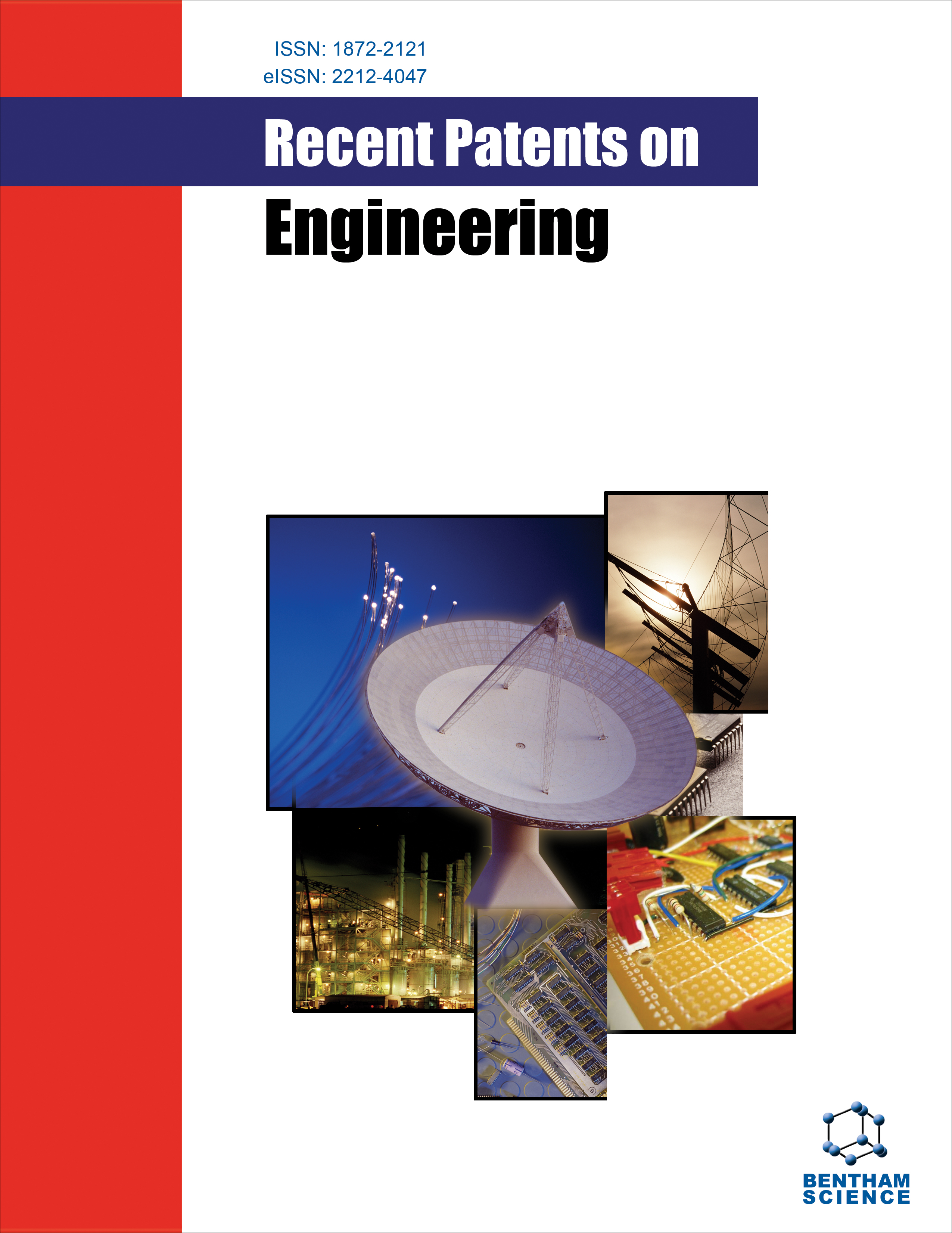- Home
- A-Z Publications
- Recent Patents on Engineering
- Previous Issues
- Volume 10, Issue 1, 2016
Recent Patents on Engineering - Volume 10, Issue 1, 2016
Volume 10, Issue 1, 2016
-
-
Examining the Influence of the Pre-Salt on Patent Applications Related to Drilling Fluids in Brazil
More LessBackground: With the discovery of the Pre-Salt oil deposits, the exploration of oil and gas is being extended to great depths in Brazil, thereby generating increasing demand for drilling capabilities. Objective: This article is aimed at assessing the consequences of this discovery accomplished by Petróleo Brasileiro S.A. (Petrobras) on patent applications in Brazil related to drilling fluid technologies. Methods: In essence, our stud Read More
-
-
-
Advances and Patents about Medical Surgical Operation Skull Grinding Equipment
More LessAuthors: Min Yang, Changhe Li, Benkai Li, Yaogang Wang and Yali HouBackground: In recent years, the researches and developments on skull grinding to remove bone pathology are increasing. Clinically, the neurosurgeons usually treat skull based lesions by removing bone pathology with high speed grinding wheel. Nevertheless, high speed grinding produces a large amount of heat, which causes thermal damage to surrounding tissues and bone necrosis. The highest critical temperat Read More
-
-
-
Recent Advances, Issues and Patents on Medical Nanorobots
More LessAuthors: Azer Celikten and Aydin CetinBackground: Nanotechnology, as the branch of technology that deals with dimensions and tolerances of less than 100 nanometers, especially the manipulation of individual atoms and molecules, has implications on scientific, medical and economic and legal impacts on society. There are extensive researches in the nanotechnology and these studies have led important discoveries in the area of nanorobotics. Objective: Th Read More
-
-
-
Batch and Continuous Fixed-Bed Column Adsorption for the Removal of Ni (II) from Aqueous Solutions using Surfactant-Treated Alumina
More LessAuthors: Moni U. Khobragade and Anjali PalBackground: Ni(II) removal from water environment is very important because it is very toxic. There are many conventional methods for Ni(II) removal but many of them have high operational and maintenance cost. Adsorption is a treatment process which is highly effective, cheap and easy to adopt. Objective: The goal of this work is to develop a suitable adsorbent for Ni(II) removal and determine the optimal condition Read More
-
-
-
Multi-Objective Optimization of an Aircraft Position Indicator and Actuation System (PIAS) using GPSIA+DS
More LessAuthors: Okafor E. Gabriel, Uhuegho O. Kole and Sun YouchaoBackground: This article reviews recent patents pertaining to the technological achievements and shortcomings of aircraft Position Indicator and Actuator System (PIAS). Generally, most patents have concentrated more on design, while implementing various developed single or multiobjective algorithms to solve component or system optimal design problems such as those of PIAS. Thus, there is a noticeable lack of patent effor Read More
-
-
-
Guidelines for Design of Transversely Stiffened Thin Walled Steel Plates
More LessBy Osama BedairBackground: Stiffened plates are commonly used in many engineering applications. Engineers in practice encounter many challenges in the analysis and design of stiffened plates due to the modelling complexities and many parameters involved. Little guidelines are available in industrial codes of practice for the design of stiffened plates. This article reviews recent developments and patents related to analysis and design Read More
-
-
-
Research of Particle Diameter Influences on Flow Characteristics Based on Feedback Valve of Internal Circulating Fluidized Bed
More LessAuthors: Lin Hongju, Zheng Dezhong and Liao WenzheBackground: Loop Seal is a key component in circulating fluidized bed. It is necessary to study its internal flow rules. Diameter of solid particle in Loop Seal is too large or small can produce bigger effects for fluidized bed operation. Objective: We will study internal flow rules in Loop Seal, and look for relationship between the key parameters of solid particle circulation and particle diameter by cold experiment. Method: The col Read More
-
Volumes & issues
-
Volume 19 (2025)
-
Volume 18 (2024)
-
Volume 17 (2023)
-
Volume 16 (2022)
-
Volume 15 (2021)
-
Volume 14 (2020)
-
Volume 13 (2019)
-
Volume 12 (2018)
-
Volume 11 (2017)
-
Volume 10 (2016)
-
Volume 9 (2015)
-
Volume 8 (2014)
-
Volume 7 (2013)
-
Volume 6 (2012)
-
Volume 5 (2011)
-
Volume 4 (2010)
-
Volume 3 (2009)
-
Volume 2 (2008)
-
Volume 1 (2007)
Most Read This Month
Article
content/journals/eng
Journal
10
5
false
en


